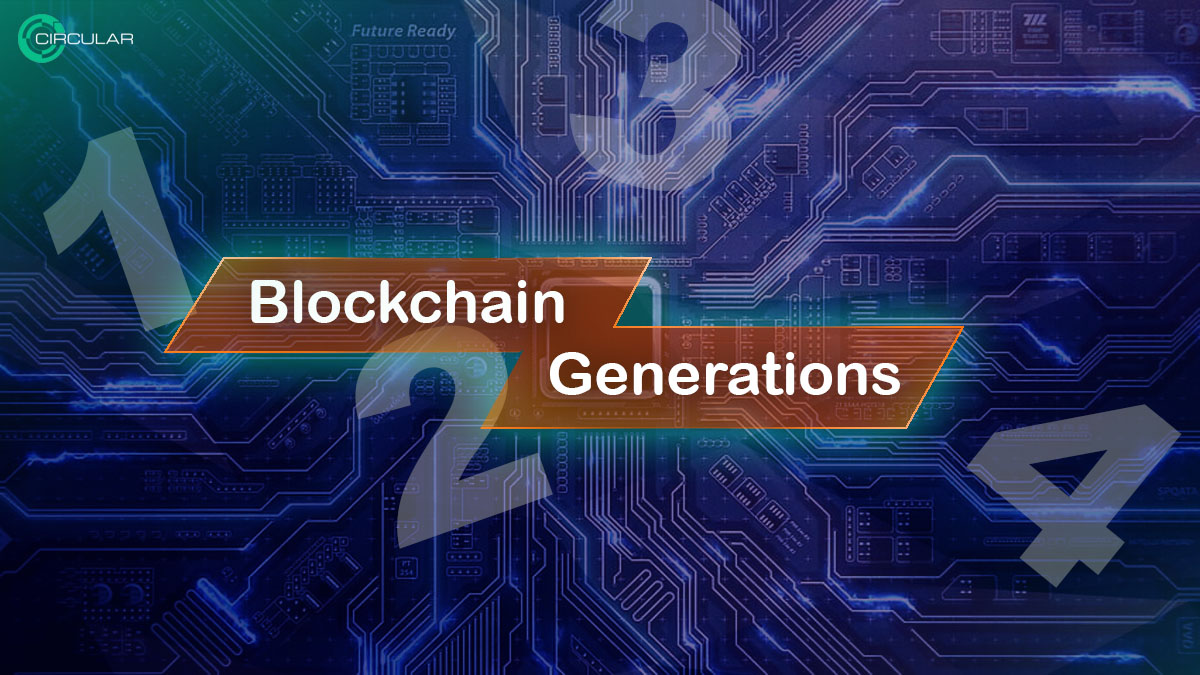Back To Blog
1226 Total Views
Boston 7/29/2023
Advancing Blockchain Generations: A Journey of Innovation and Sustainability
Layer 1 blockchains have traversed a remarkable path, experiencing exponential growth and widespread adoption, not only for cryptocurrencies but also for diverse use cases. As this adoption has flourished, it has become evident that the initial architectures had their limitations, paving the way for the emergence of distinct blockchain generations.

Join us on social networks
1st Generation: The Birth of Bitcoin
The genesis of blockchain technology can be traced back to the revolutionary creation of Bitcoin in 2009 by the mysterious Satoshi Nakamoto. Bitcoin stands as the first generation, introducing a decentralized peer-to-peer network to facilitate secure transactions using a distributed ledger. Despite its groundbreaking inception, Bitcoin's functionalities were relatively limited, lacking programmability features within the layer 1.2nd Generation: The Advent of Ethereum
Ethereum emerged as a significant milestone in blockchain's evolution. Launched in 2015 by Vitalik Buterin, Ethereum brought smart contracts into the spotlight. The concept of smart contracts, initially envisioned by Nick Szabo in 1994, empowered the deployment of decentralized applications (DApps) on the Ethereum network. This innovation expanded the blockchain's potential beyond transactions and laid the groundwork for the vibrant world of DApps we see today.3rd Generation: Seeking Scalability and Sustainability
As blockchain's popularity surged, scalability and sustainability became pressing concerns. Third-generation blockchains, including Cardano, Solana, Polkadot, Avalanche, Algorand, and others, aimed to address these challenges. These platforms explored diverse consensus mechanisms and governance models to achieve an optimal balance between security, scalability, and decentralization.During this phase, many blockchains were still predominantly reliant on the energy-intensive proof-of-work (PoW) consensus mechanism, leading to debates on environmental sustainability. Some projects like Algorand adopted innovative approaches from the outset, striving to align user expectations with efficient and sustainable practices.
The Quinlemma: Introducing 4th Generation Blockchains
As we advance further, we encounter the 4th generation of blockchains, tackling what we refer to as the "quinlemma." This new challenge encompasses five key aspects: security, scalability, decentralization, programmability, and performance.
Unlike the previous "trilemma," 4th generation blockchains aim to harmonize all five elements simultaneously. They seek to provide high-performance blockchains that retain decentralization, ensure security, enable programmability for sophisticated processing, and enhance scalability. Achieving this delicate balance will drive broader adoption by simplifying user interactions and fostering convergence between artificial intelligence and web3 technologies.
Circular Protocol: Pioneering 4th Generation Innovation
Circular Protocol exemplifies a cutting-edge 4th generation blockchain, designed with a vision for simplicity, enrichment, and sustainability. By adhering to these principles, it seeks to revolutionize the blockchain landscape, offering seamless and user-friendly experiences while empowering sophisticated AI applications.In conclusion, the journey of blockchain generations is a testament to human ingenuity and perseverance in advancing decentralized systems. From the pioneering days of Bitcoin to the promise of 4th generation innovations, the blockchain revolution continues to reshape industries and unlock new possibilities for the future. Embracing these advancements with a sustainable mindset will pave the way for a more inclusive and transformative digital landscape.
Gianluca De Novi is a co-founder of Circular Protocol, a faculty at the Harvard Medical School, Harvard Extension School and is Director of the Medical Device and Simulation at the Massachusetts General Brigham. He holds a Ph.D. in
Robotics and Control systems from the University of Bologna (Italy) and is an expert in High Performance Computing.
This article is for general information purposes and is not intended to be and should not be taken as legal or investment advice. The views, thoughts and opinions expressed here are the author's alone and do not necessarily reflect or represent the views and opinions of Circular Protocol.
#blockchain #web3 #DeFi #crypto #NFT #GameFi #coin #decentralization
Circular Protocol Blog-chain
OTHER READINGS
Advancing Blockchain Generations: A Journey of Innovation and Sustainability
Learn More

MediSim VR and Circular together for Health 3.0: medical education and treatments step up thanks to Virtual Reality and Blockchain
Learn More
Circular on Youtube
INFLUENCERS WE RECOMMEND


















